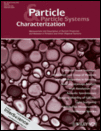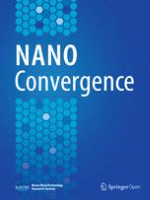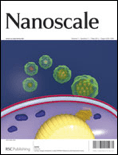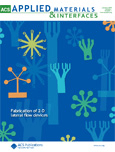
International Journal of Nano Dimension
Scope & Guideline
Fostering collaboration in cutting-edge nano research.
Introduction
Aims and Scopes
- Nanomaterials Synthesis and Characterization:
Research on the development of novel methods for synthesizing nanomaterials, including green synthesis techniques and conventional methods, along with comprehensive characterization of their structural, optical, and electrochemical properties. - Nanotechnology Applications in Medicine:
Exploration of nanotechnology's potential in medical fields, particularly drug delivery systems, cancer therapy, and antimicrobial applications, focusing on the design and efficacy of nanoparticles in targeted therapies. - Environmental and Energy Solutions:
Studies on the utilization of nanomaterials for environmental applications, such as water purification, pollution control, and energy conversion, including their roles in enhancing the performance of photovoltaic and photocatalytic systems. - Computational Modeling and Simulations:
Utilization of computational techniques to model nanomaterial behavior, including simulations of electronic properties, thermal dynamics, and fluid interactions, aiding in the understanding of nanoscale phenomena. - Nanoelectronics and Device Fabrication:
Research on the integration of nanomaterials in electronic devices, including the design and simulation of nanoscale transistors and sensors, highlighting advancements in nanoelectronics and their applications in various technologies.
Trending and Emerging
- Green Nanotechnology:
An increasing number of studies are focusing on environmentally friendly synthesis methods for nanomaterials, such as biosynthesis using plant extracts, which align with global trends towards sustainability and reducing the environmental impact of nanotechnology. - Drug Delivery and Nanomedicine:
There is a notable surge in research related to nanomedicine, particularly in the development of advanced drug delivery systems that enhance therapeutic efficacy and reduce side effects, reflecting a growing interest in personalized medicine and targeted therapies. - Advanced Characterization Techniques:
Emerging trends in the application of sophisticated characterization techniques, such as DFT (Density Functional Theory) and advanced imaging methods, are becoming more prevalent, allowing for deeper insights into the properties and behaviors of nanomaterials. - Nanotechnology in Energy Applications:
Research on the application of nanomaterials in energy technologies, including photovoltaics and photocatalysis, is gaining momentum, driven by the urgent need for sustainable energy solutions and efficient energy conversion systems. - Multifunctional Nanocomposites:
There is an increasing focus on the development of multifunctional nanocomposites that combine various properties for diverse applications, such as antimicrobial activity, photocatalytic efficiency, and enhanced mechanical properties, indicating a trend towards integrating functionalities in nanomaterials.
Declining or Waning
- Traditional Chemical Synthesis Methods:
There has been a noticeable decline in studies focused on conventional chemical synthesis methods for nanoparticles, as researchers increasingly favor greener, more sustainable approaches that utilize biological materials or environmentally friendly processes. - Basic Theoretical Studies:
Research that primarily focuses on fundamental theoretical investigations without practical applications seems to be waning. The journal's recent publications have shifted towards studies that emphasize practical applications and experimental validation of nanomaterials. - Nanomaterials in Cosmetics:
Although earlier publications addressed the use of nanotechnology in the cosmetics industry, this topic appears to have diminished in frequency, potentially as researchers explore more impactful applications in medicine and environmental science.
Similar Journals

PARTICLE & PARTICLE SYSTEMS CHARACTERIZATION
Fostering Collaboration in Particle ResearchPARTICLE & PARTICLE SYSTEMS CHARACTERIZATION is a distinguished journal dedicated to advancing the knowledge within the fields of Chemistry, Condensed Matter Physics, and Materials Science. Published by WILEY-V C H VERLAG GMBH in Germany, this journal has established a solid reputation since its inception in 1984, showcasing research aimed at understanding the intricate properties and behaviors of particulate systems. With an impressive Q2 ranking in its respective categories and Scopus ranks indicating a robust standing in the global research community, it serves as an essential resource for researchers, professionals, and students. Although it does not currently offer Open Access options, its comprehensive articles and reviews provide valuable insights that contribute significantly to the ongoing discourse in these scientific domains. As it prepares to celebrate four decades of publication, PARTICLE & PARTICLE SYSTEMS CHARACTERIZATION continues to provide a vital platform for emerging knowledge, fostering innovation and collaboration among scientists dedicated to the study of particle systems.

Nano Convergence
Pioneering interdisciplinary research for a nano-powered future.Nano Convergence is a premier open access journal dedicated to the rapidly evolving fields of nanotechnology, materials science, and engineering. Published by SPRINGER, this journal has been at the forefront of interdisciplinary research since its inception in 2014, and is set to continue its journey until 2024. With an impressive impact factor and recognition as Q1 in both Engineering (miscellaneous) and Materials Science (miscellaneous) categories, Nano Convergence ranks among the top publications, listed as Rank #8 out of 307 in General Engineering and Rank #34 out of 463 in General Materials Science according to Scopus metrics. This journal provides a platform for researchers, professionals, and students to share pioneering studies that converge different disciplines within nanotechnology. With its commitment to open access, Nano Convergence ensures that cutting-edge research is readily available to the global community, fostering innovation and collaborative advancements in the field.

Nanoscale
Pioneering Discoveries in Materials Science.Nanoscale is a premier academic journal published by the Royal Society of Chemistry, dedicated to advancing the field of nanoscience and nanotechnology. With both its ISSN (2040-3364) and E-ISSN (2040-3372) ensuring wide accessibility, the journal is renowned for its high-impact research contributions, reflected in its impressive 2023 Impact Factor and prestigious Q1 ranking in both Materials Science (Miscellaneous) and Nanoscience and Nanotechnology categories. Since its inception in 2009, Nanoscale has fostered a collaborative platform where leading researchers from around the globe share their innovative findings across a multitude of topics spanning from material synthesis to applications in nanotechnology. The journal not only serves as a valuable resource for professionals, researchers, and students but also actively engages the academic community in discussing emerging trends, thus shaping the future of nanoscience. Situated in the heart of the UK at Thomas Graham House, Science Park, Milton Rd, Cambridge CB4 0WF, Nanoscale remains a key publication for those looking to keep abreast of the latest breakthroughs in an ever-evolving field.

Nanomedicine Journal
Unlocking the Potential of Nanomedicine for All.Nanomedicine Journal, published by Mashhad University of Medical Sciences, serves as a vital platform for research and developments in the dynamic field of nanotechnology applied to medicine. With an ISSN of 2322-3049 and an E-ISSN of 2322-5904, this Open Access journal, operational since 2013, makes cutting-edge research freely accessible to encourage collaborative efforts in this rapidly evolving domain. The journal navigates various areas, including bioengineering, biomedical engineering, materials science, and pharmacology, holding prestigious rankings in categories relevant to these fields. The 2023 Scopus Rankings reveal its significant standing within the scientific community, particularly with a 76th percentile in general medicine. By bridging the gap between laboratory technologies and clinical applications, the Nanomedicine Journal aims to empower researchers, professionals, and students alike to contribute to the innovative landscape of nanomedicine. With a convergence period extending from 2019 to 2024 and an established reputation, this journal is essential for those pursuing advancements in therapeutic solutions and diagnostics through nanotechnology.

ACS Nanoscience Au
Elevating Knowledge in NanotechnologyACS Nanoscience Au, published by the American Chemical Society, is a leading open-access journal dedicated to the rapidly evolving field of nanoscience. Since its inception in 2021, this journal has established itself within the top quartiles of academic publishing, ranking Q1 in both Chemistry and Materials Science for 2023. With a commitment to disseminating high-quality research, it provides a platform for innovative findings in nanomaterials, nanotechnology applications, and associated interdisciplinary studies. The journal is based in the United States and embraces an open-access model, ensuring that research is freely accessible to a global audience. This initiative not only enhances the visibility of authors' work but also facilitates collaboration across scientific domains. As a vital resource for researchers, professionals, and students alike, ACS Nanoscience Au plays a crucial role in advancing knowledge in the nanoscience community.

Nanobiotechnology Reports
Pioneering research for a nano-enabled tomorrow.Nanobiotechnology Reports, an impactful journal published by PLEIADES PUBLISHING INC, serves as a prominent platform for disseminating cutting-edge research at the intersection of nanotechnology and biotechnology. With its ISSN 2635-1676 and E-ISSN 2635-1684, this open-access journal is committed to providing researchers, professionals, and students with accessible knowledge and innovations that drive advancements in this rapidly evolving field. Operating out of the United States, Nanobiotechnology Reports has established itself in various engineering and science categories, including Bioengineering and Biomedical Engineering, currently holding a Q4 quartile ranking in 2023. Although it is in the early stages of its publication journey since its convergence in 2021, the journal aims to foster collaboration and knowledge-sharing within the scientific community, addressing the complexities of nanomaterials and their applications in biological systems. Researchers and practitioners in nanobiotechnology are encouraged to contribute to this expanding body of knowledge, facilitating the development of innovative solutions that impact various sectors, from healthcare to electronics.

International Journal of Nanoscience
Advancing Knowledge in Nano-Applications and BeyondThe International Journal of Nanoscience, published by WORLD SCIENTIFIC PUBL CO PTE LTD, stands as a significant platform in the multidisciplinary field of nanoscience and nanotechnology, offering a unique insight into innovative research developments and applications from 2004 to 2024. Based in Singapore, this journal provides an academic space for researchers, professionals, and students to explore the latest advancements across its wide-ranging scopes, which include bioengineering, biotechnology, computer science applications, condensed matter physics, electrical engineering, and materials science. While currently categorized in Q4 quartiles across multiple fields, the journal's commitment to quality research and scholarly discourse positions it as a pivotal resource for driving forward the understanding and application of nanoscience. Despite its non-open access format, the journal invites subscriptions from institutions and individuals eager to stay ahead in this rapidly evolving discipline. By fostering an environment of collaboration and innovation, the International Journal of Nanoscience aims to contribute significantly to the body of knowledge essential for future breakthroughs in science and technology.

ACS Applied Materials & Interfaces
Exploring Breakthroughs in Materials Science and InterfacesACS Applied Materials & Interfaces, published by the American Chemical Society, stands as a leading journal in the field of applied materials, nanotechnology, and interdisciplinary research in medicine. With an impressive Impact Factor that places it in the Q1 category across Materials Science, Medicine, and Nanoscience and Nanotechnology, this journal consistently ranks among the top tier, evidencing its significance and influence in advancing scientific knowledge. The journal’s scopus ranking of 33 out of 463 in General Materials Science further underscores its critical role in disseminating innovative and high-quality research. Although it is not an open-access journal, a diverse range of access options is available, ensuring that vital research findings are accessible to a broad audience of researchers, professionals, and students. Targeting breakthroughs in the synthesis, characterization, and application of materials and interfaces, ACS Applied Materials & Interfaces serves as a pivotal platform for publishing cutting-edge studies essential for future technological advancements.

IET Nanobiotechnology
Fostering Collaboration in Cutting-Edge Nanobiotechnology.IET Nanobiotechnology, published by WILEY-HINDAWI in the United Kingdom, is a leading journal dedicated to advancing the field of nanobiotechnology by exploring the interplay between nanotechnology and biological systems. With an impressive impact factor and a significant coverage in Scopus rankings, this journal occupies a pivotal position within the Q2 and Q3 quartiles across various relevant disciplines, including Biotechnology, Electrical and Electronic Engineering, and Nanoscience. Since its inception in 2007, the journal has showcased a diverse range of high-quality research that facilitates the development of innovative nanomaterials and their applications in medicine, biosensing, and bioengineering. Open access to its articles ensures that cutting-edge advancements are readily accessible to the global research community, fostering collaboration and knowledge sharing. As the field of nanobiotechnology continues to evolve, IET Nanobiotechnology remains a crucial resource for researchers, professionals, and students striving to shape the future of this interdisciplinary domain.

Micro & Nano Letters
Unlocking the potential of tiny technologies.Micro & Nano Letters is a prominent open-access journal published by WILEY, dedicated to advancing the fields of micro and nanoscale science and technology. Since its inception in 2007, the journal has been a valuable resource for researchers, professionals, and students, delivering high-quality research that supports innovation and collaboration in bioengineering, biomedical engineering, condensed matter physics, materials science, and nanoscience. With an impact factor that reflects its growing influence, Micro & Nano Letters has earned recognition in various Scopus categories, including a Q3 ranking in both Condensed Matter Physics and Materials Science as of 2023. Its commitment to open access, established in 2021, ensures that the latest developments in micro- and nanotechnologies are accessible to a global audience, fostering a multidisciplinary dialogue across academia and industry. The journal continues to play a critical role in disseminating cutting-edge research and promoting technological advancements worldwide.